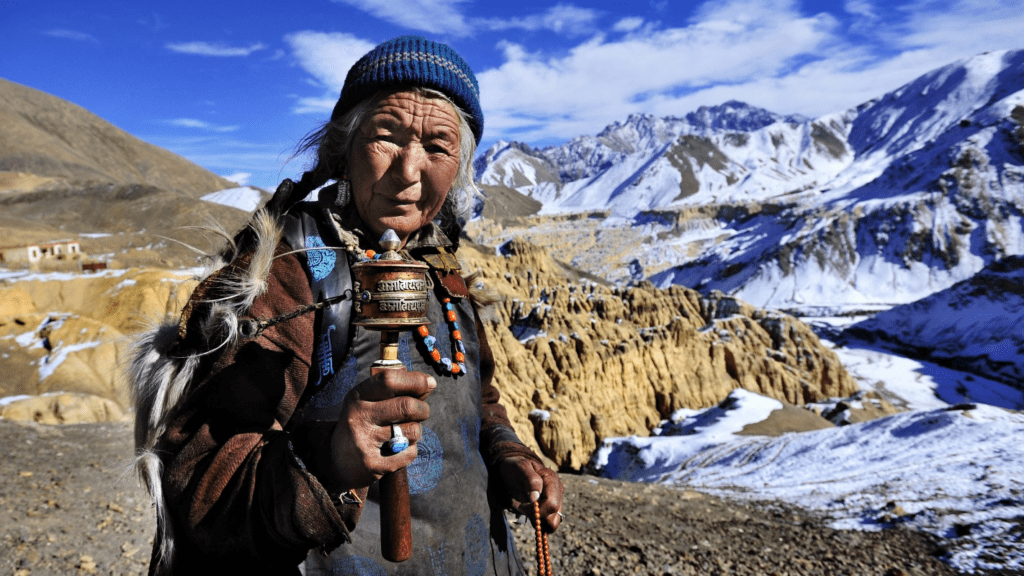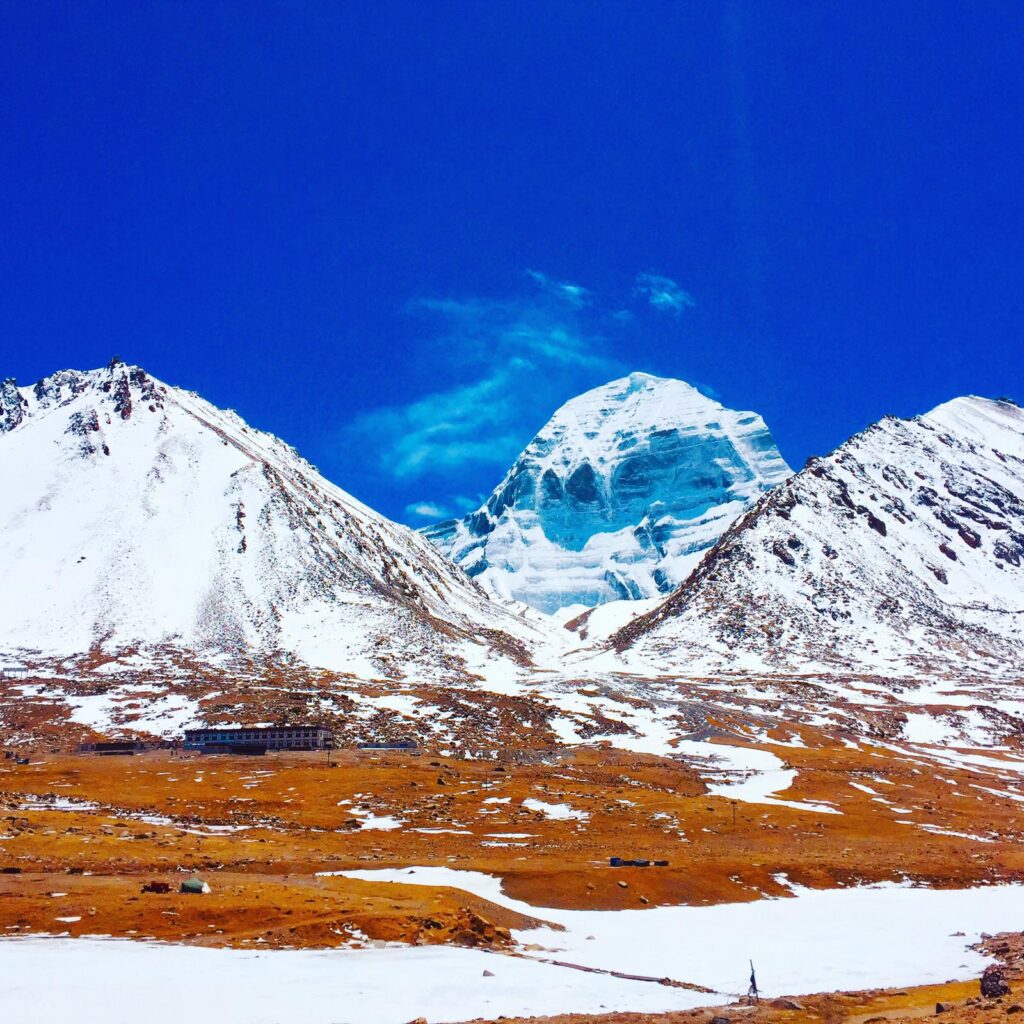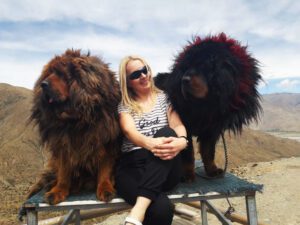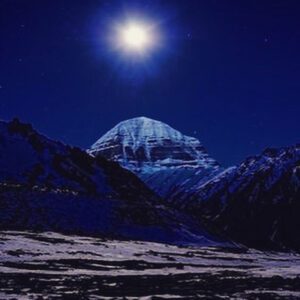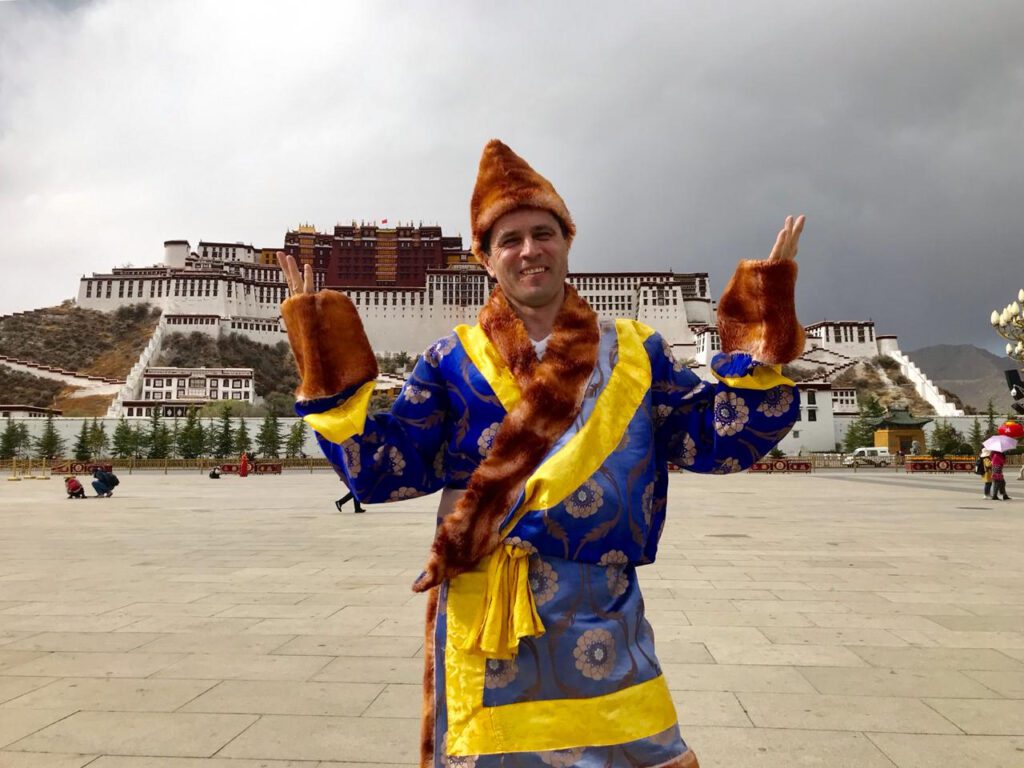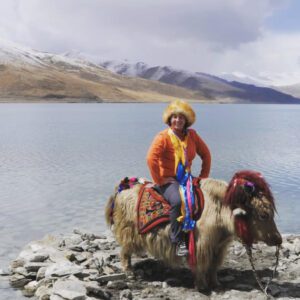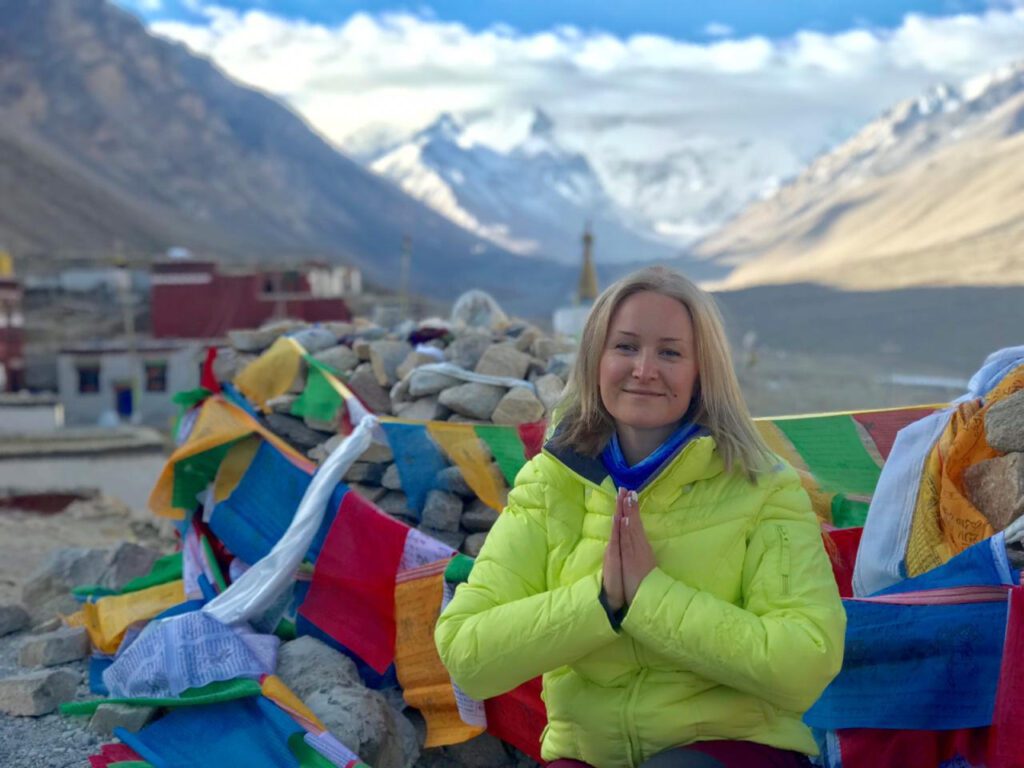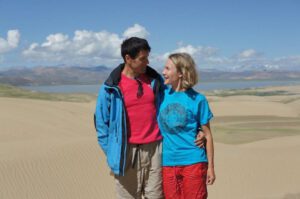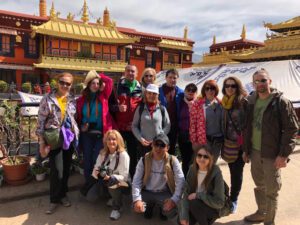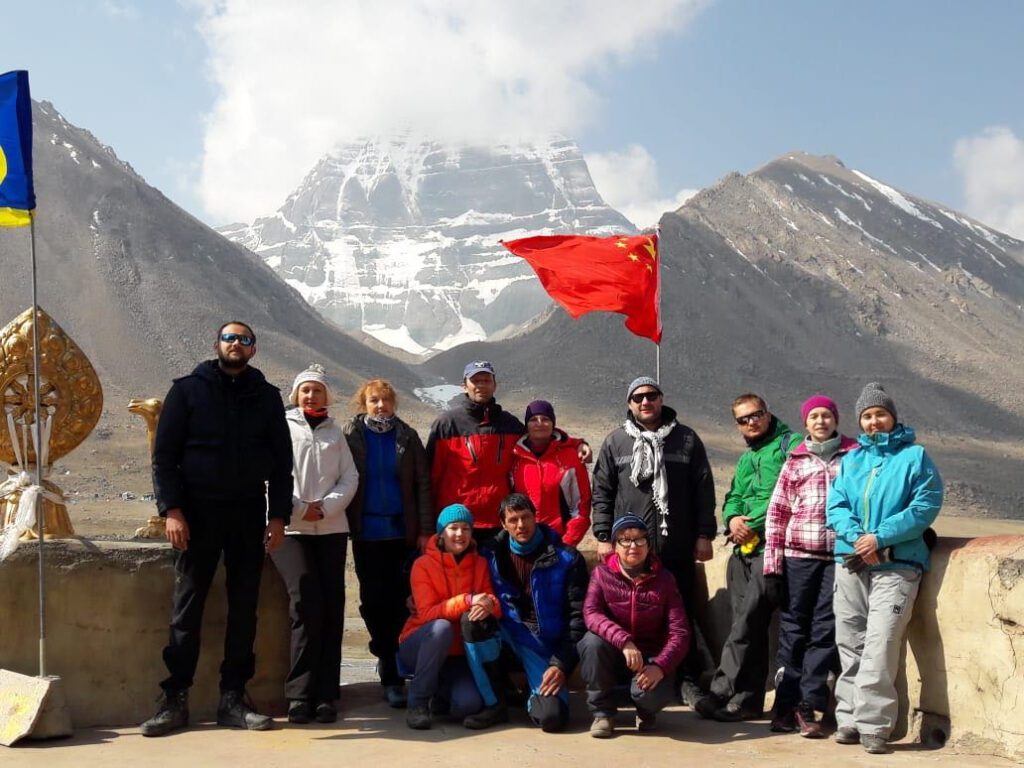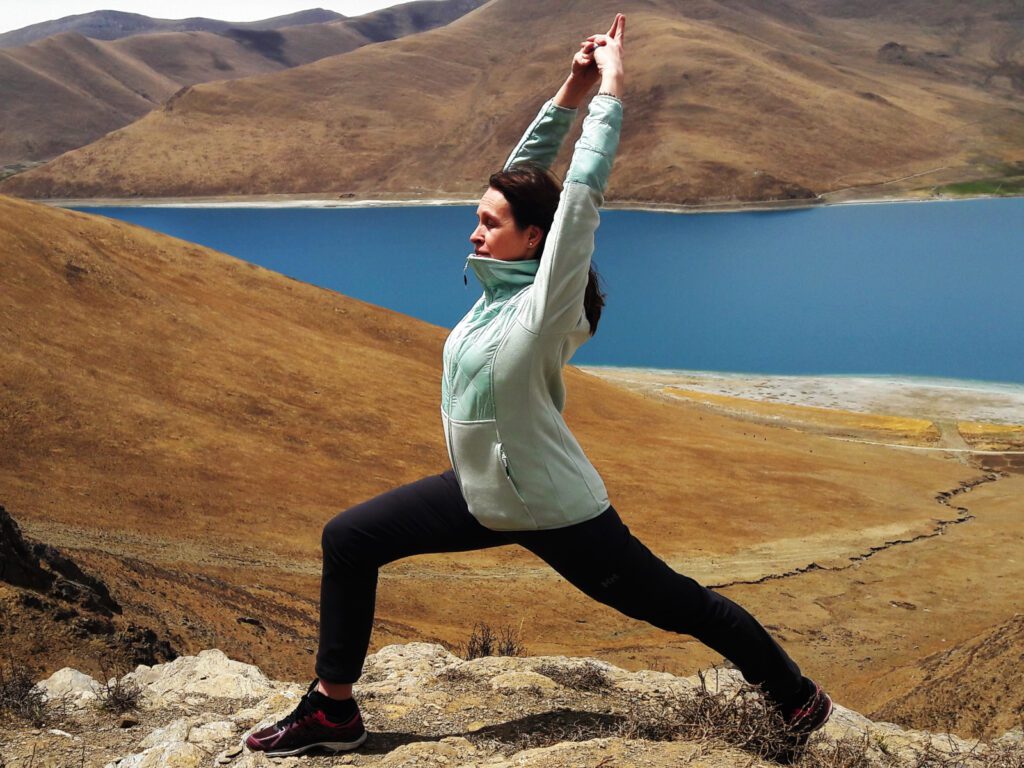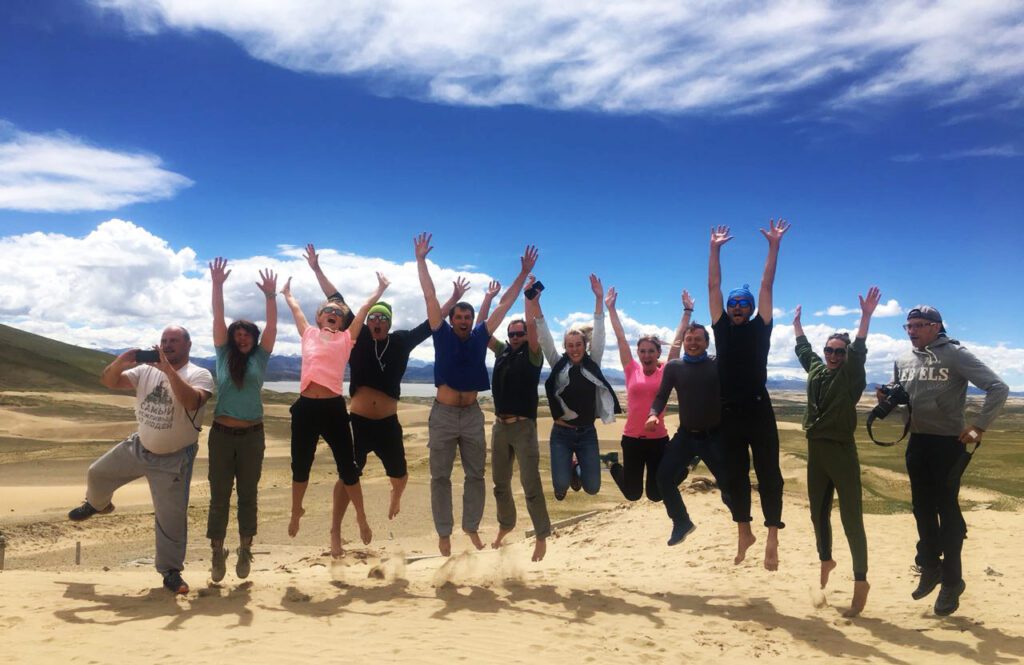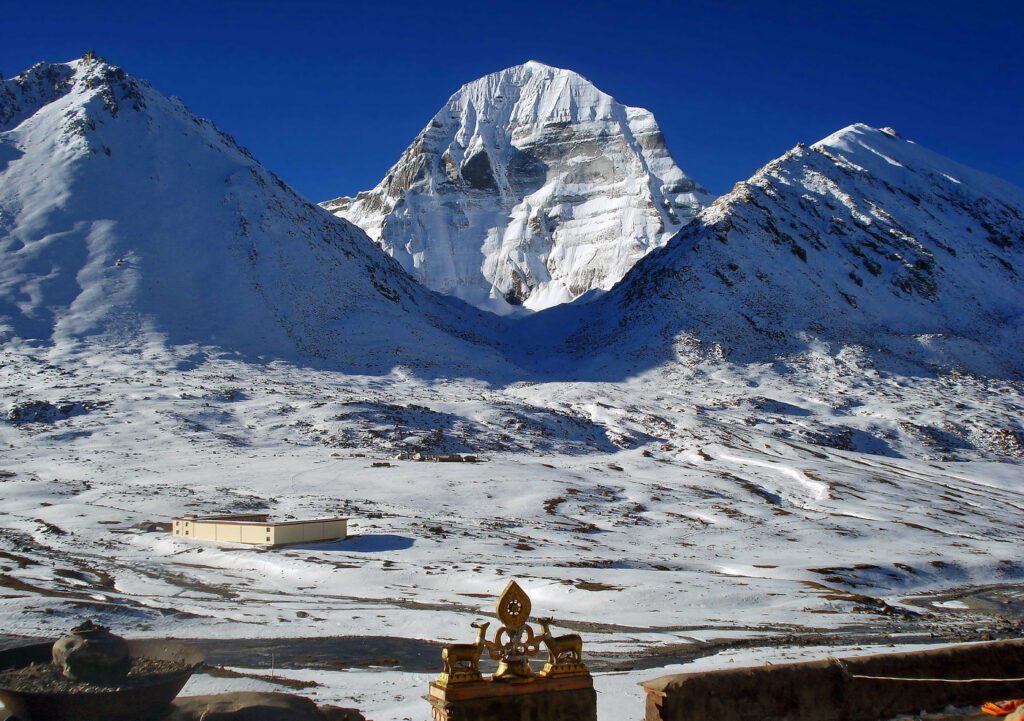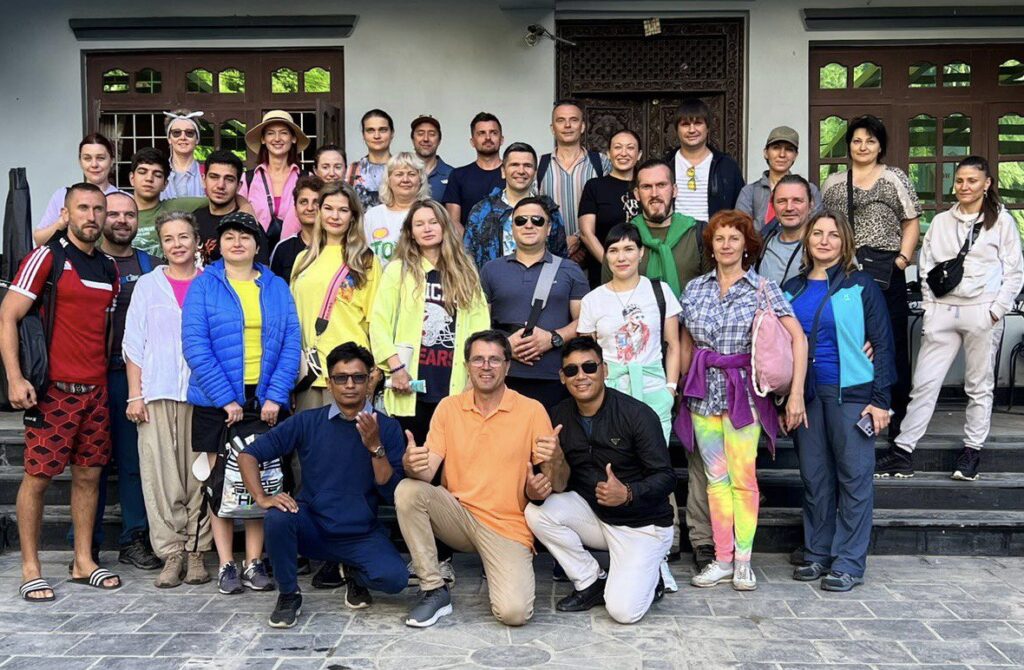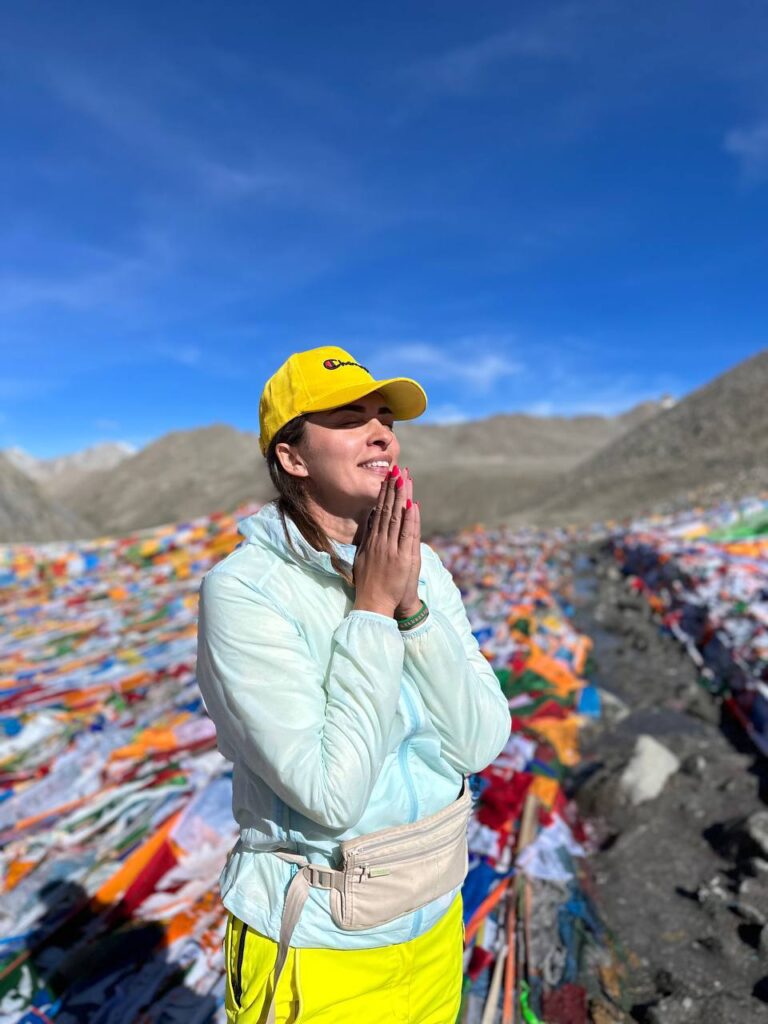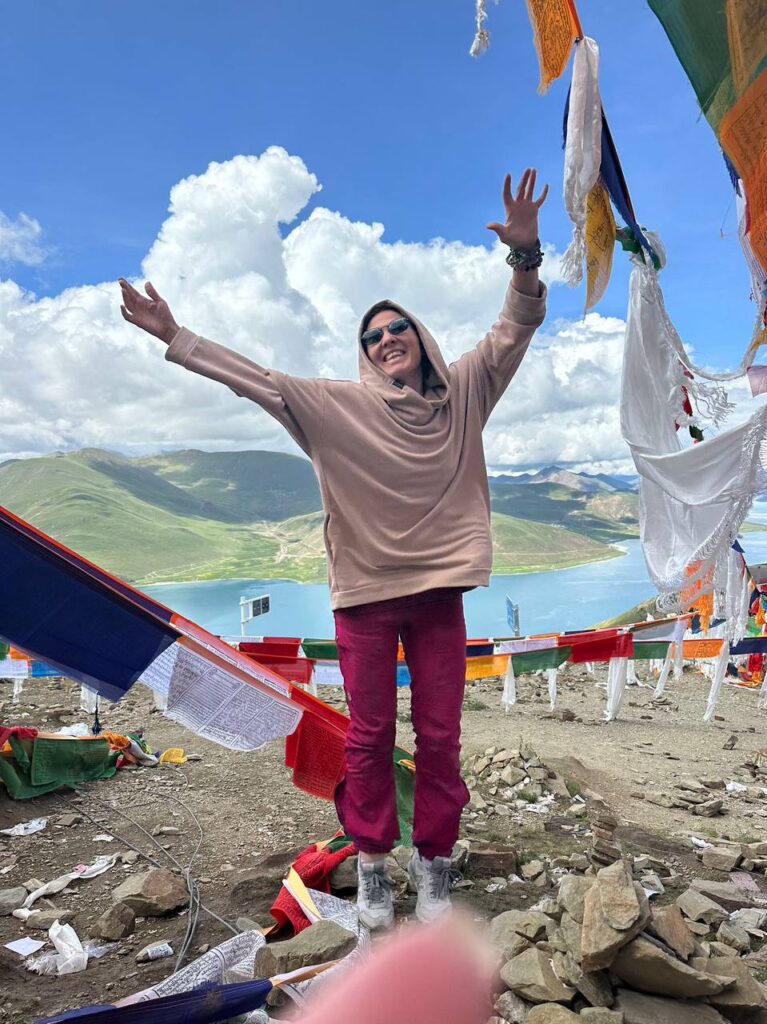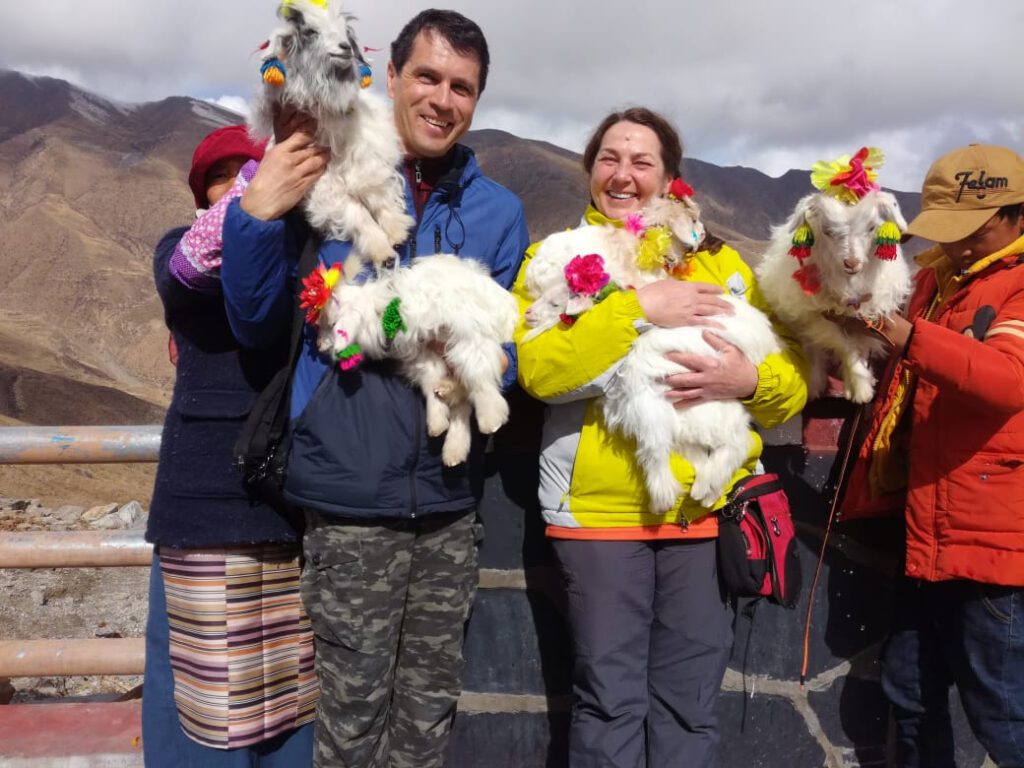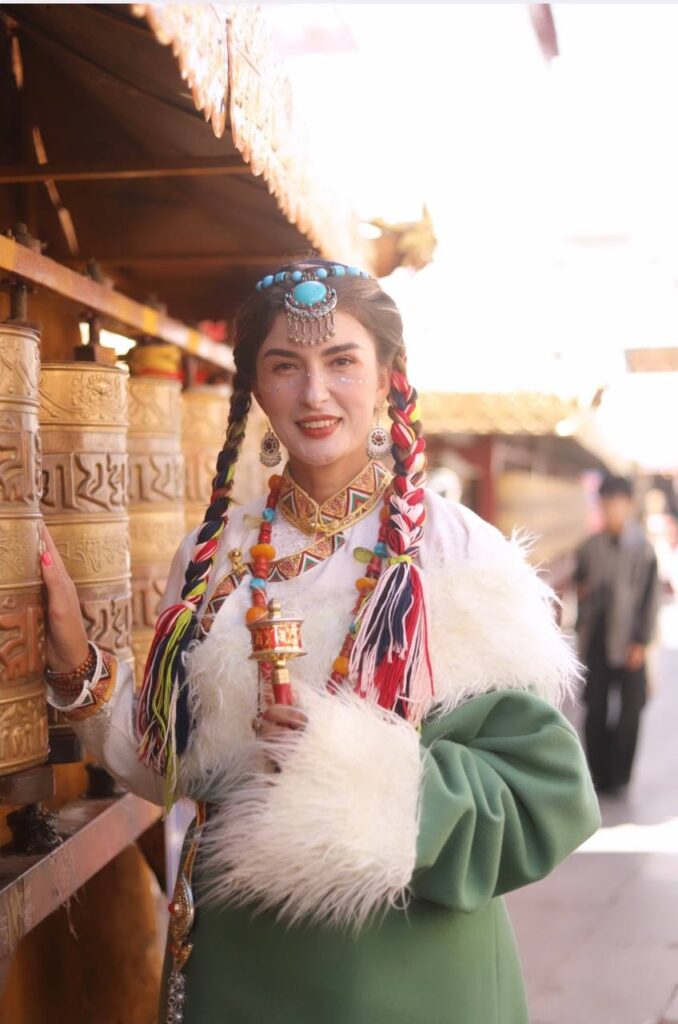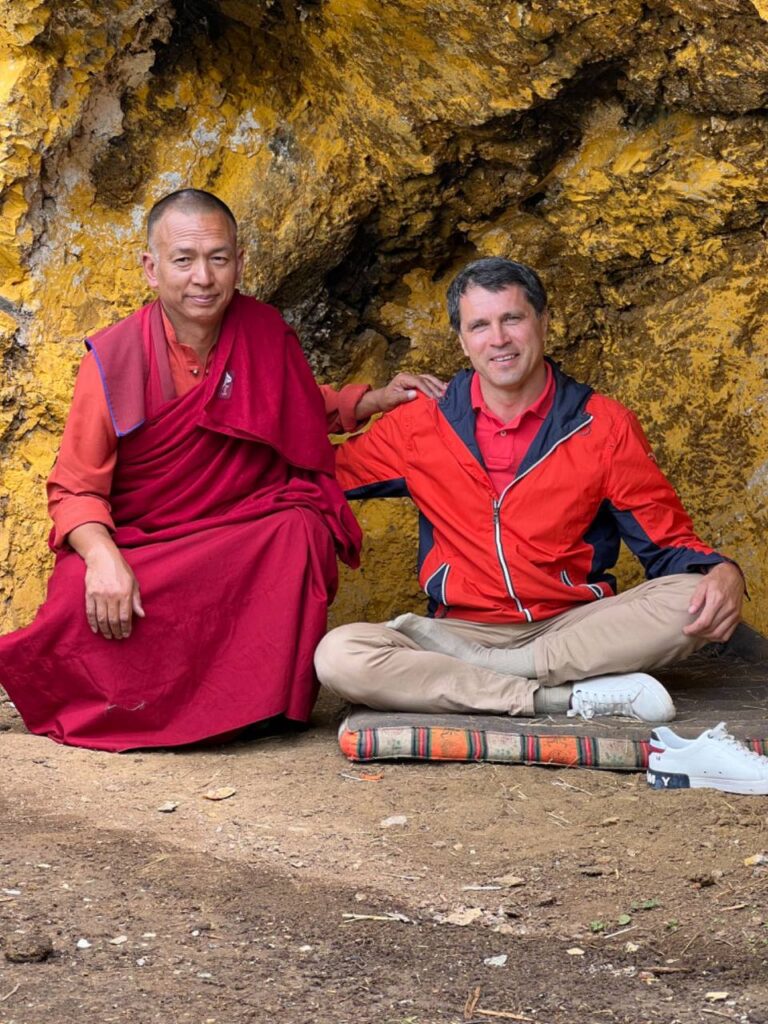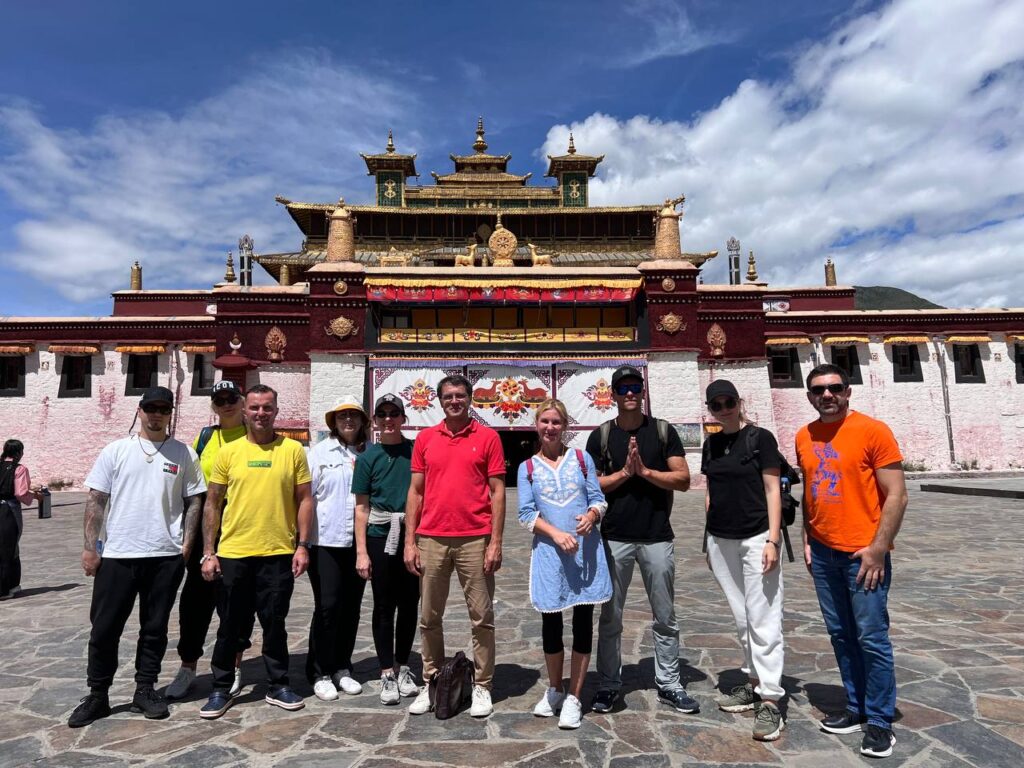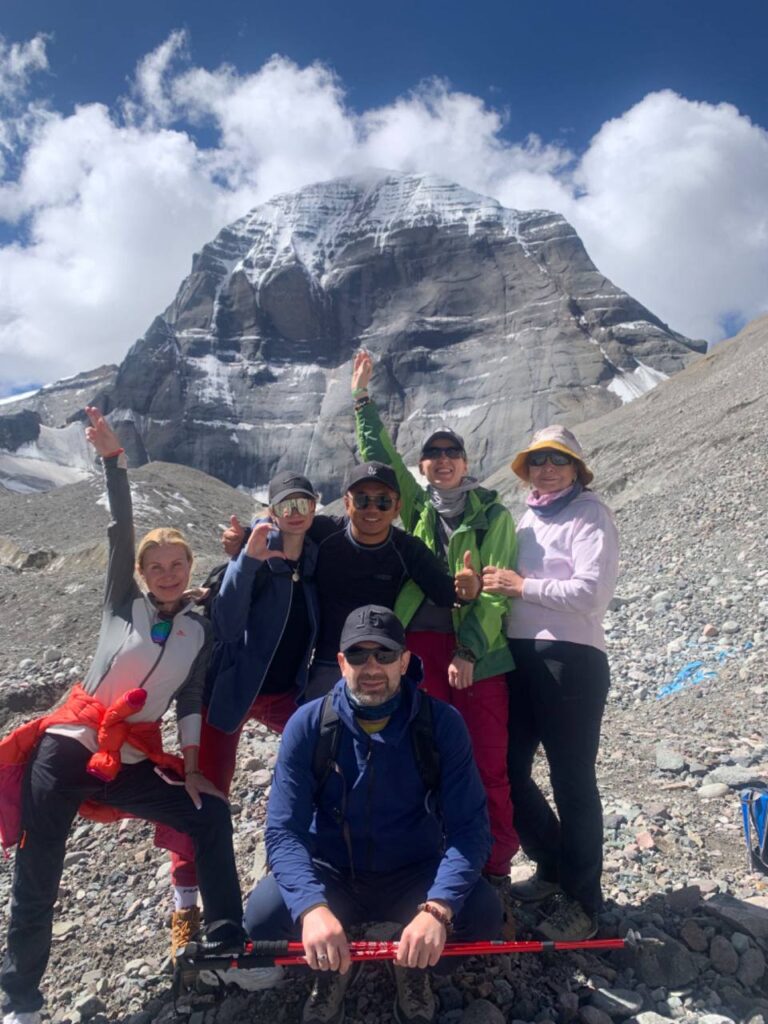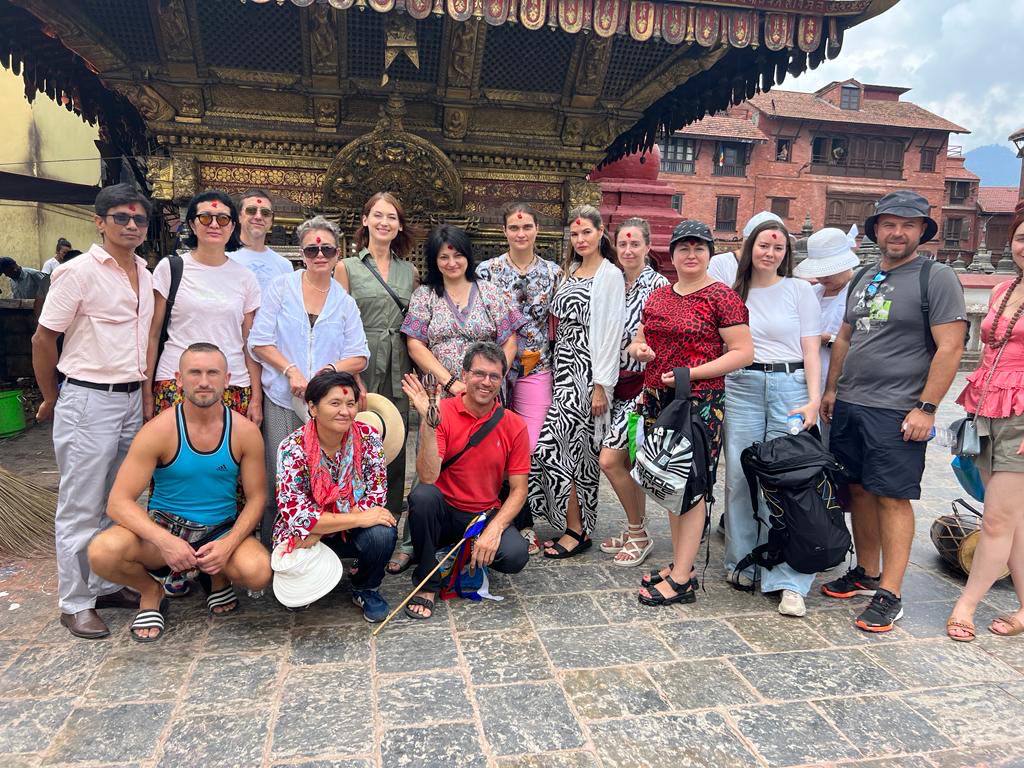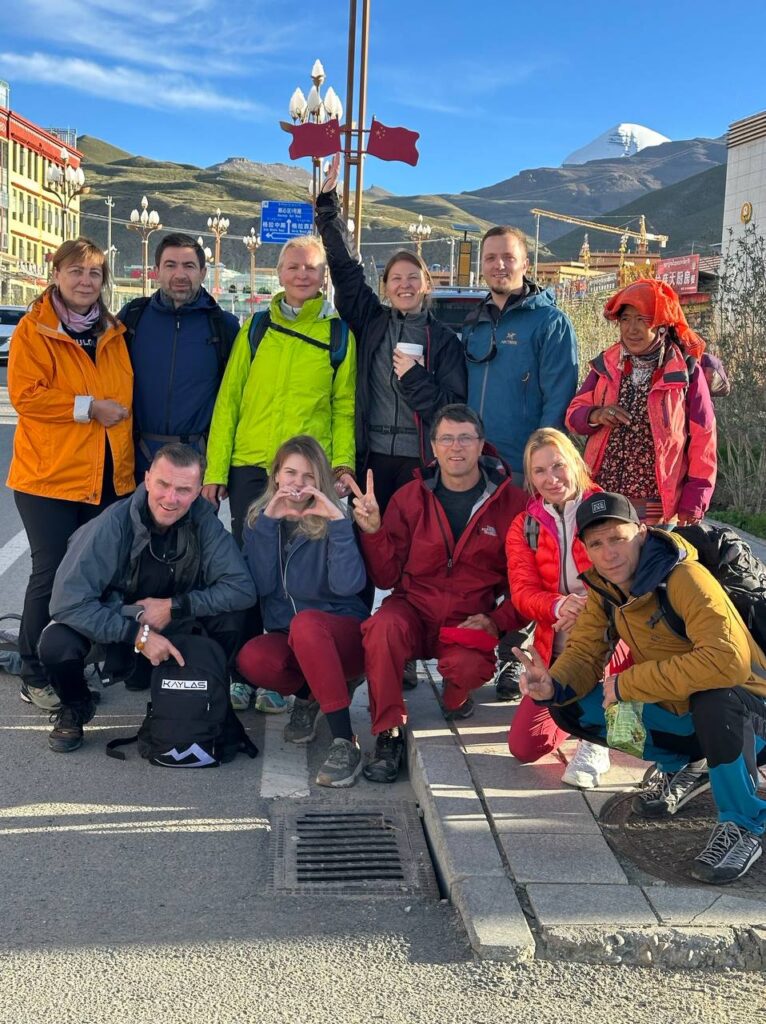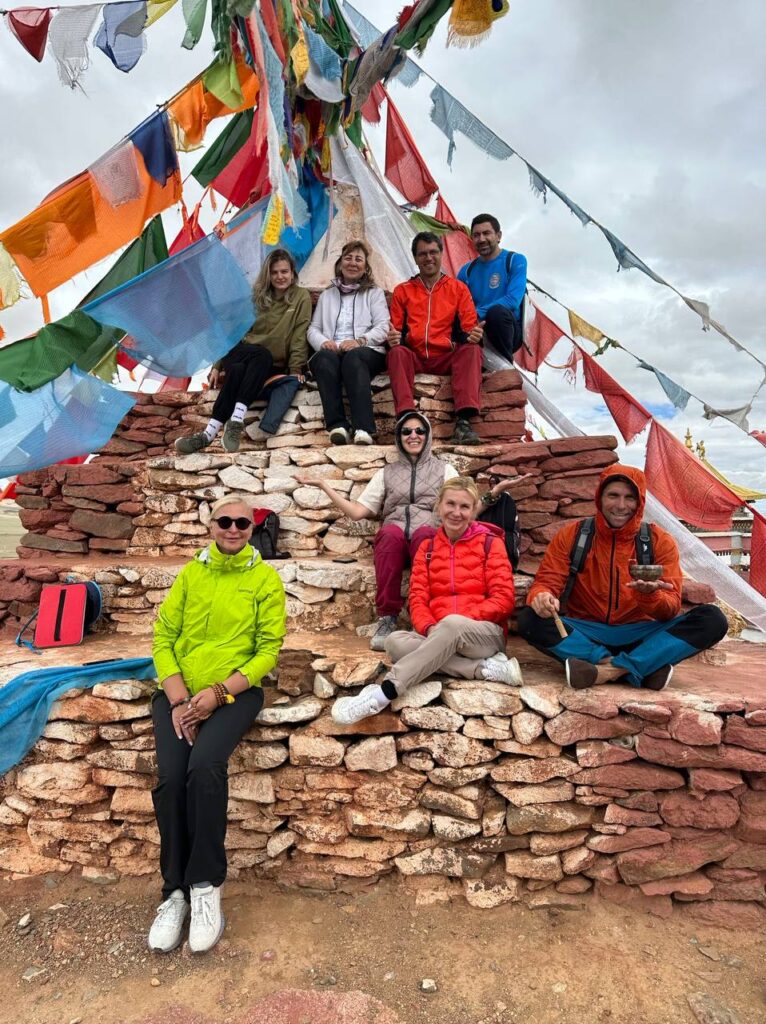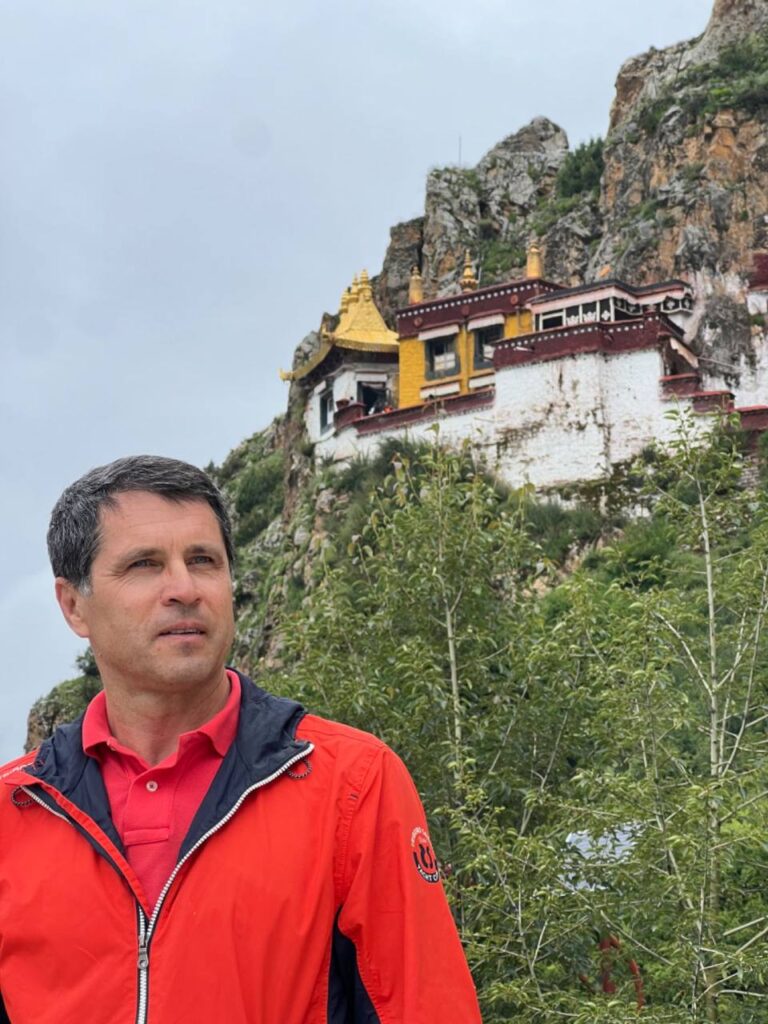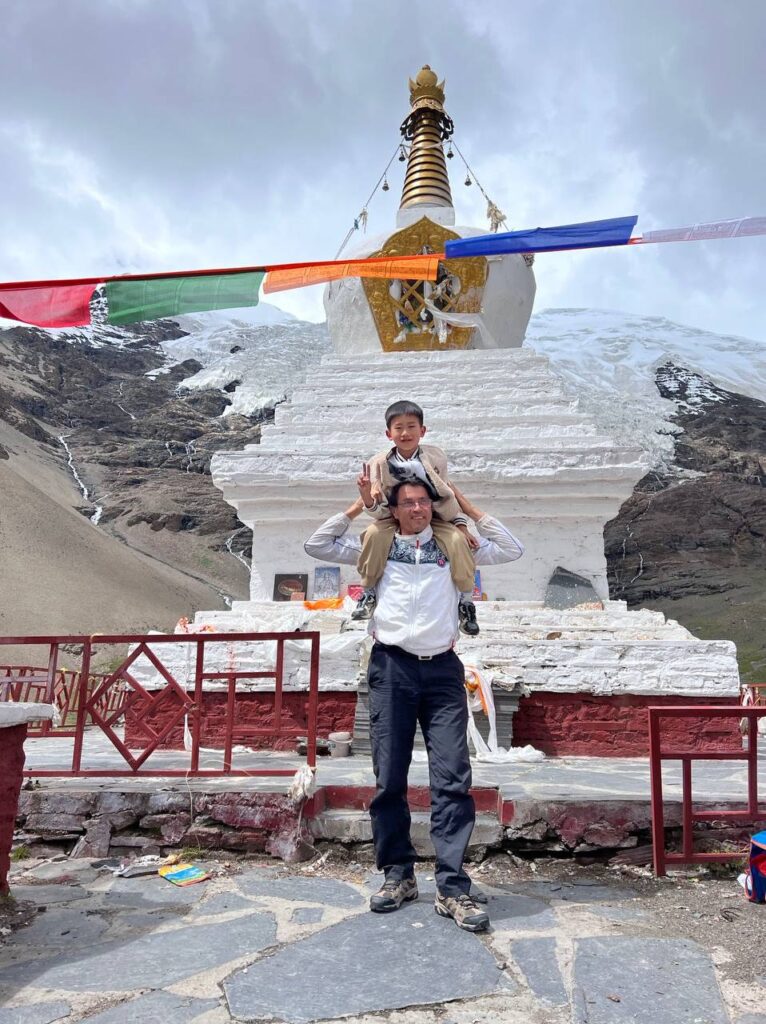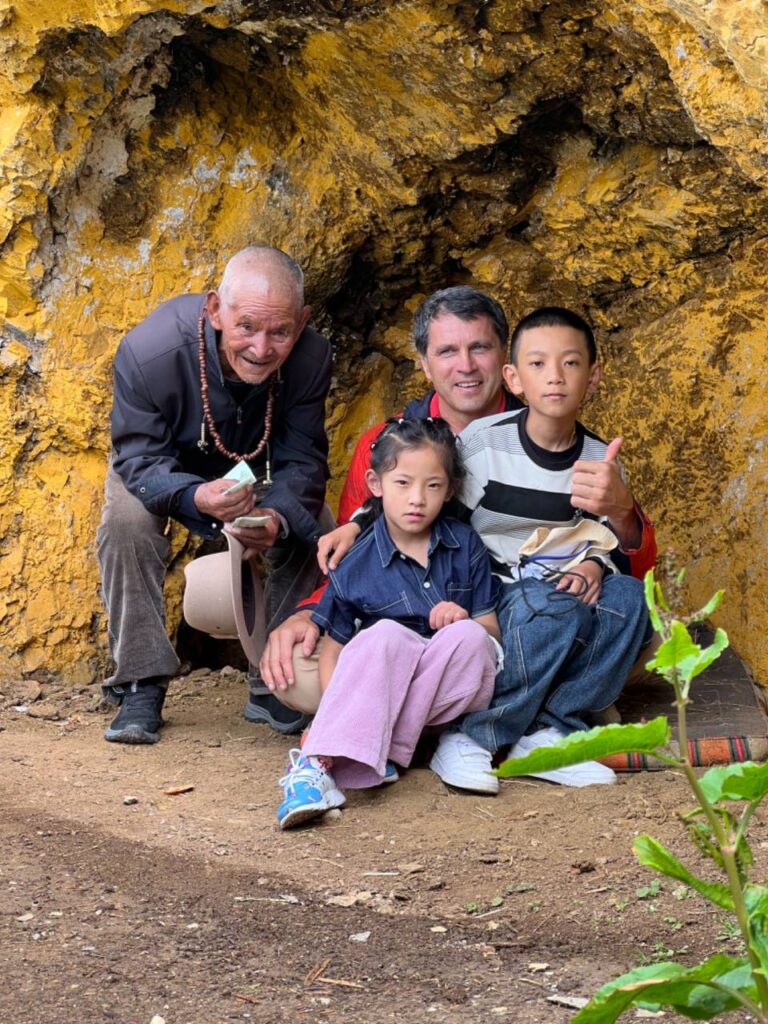Day1: Arrive in Lhasa, the capital of Tibet. Transfer to Tsedang. Getting to know each other and relaxing.
A scenic road from the airport to the city with high mountain scenery and views of Tibetan villages and views of the world’s highest river, the Yalutsangbu. The drive will take about an hour.
Overnight in a 4* hotel in Cedang.

Day 2: Excursion to Samye Monastery, the first Buddhist monastery in Tibet. A walk through the neighborhood. Transfer to Lhasa, the capital of Tibet.
Today we will visit the oldest Buddhist monastery in Tibet, Samye. It’s active. You can meet the Lama, attend a puja.
Samye Monastery was founded by the legendary Guru Rinpoche (Padmasambhava). Samye Monastery is located on the northern bank of the Brahmaputra River.
Built in the form of a mandala, it is the only structure of its kind in Tibet.
Padmasambhava’s Brief Biography of Padmasambhava says of Samye Monastery:
“It was erected as a symbol of Mount Sumeru, surrounded by four large continents and eight small ones, the sun and moon, and a wall of iron mountains.”
The monastery has preserved relics related to Padmasambhava.
During the founding of Samye Monastery, at the request of King Trisong Decena, Padmasambhava opened the mandala of Vajrayana teachings at the Chimpu Caves to 25 disciples, nine of whom attained siddhis through the sadhana practices he imparted to them.
After lunch, transfer to Lhasa, the capital of Tibet. Evening walk around Lhasa.
Overnight in a 4* hotel in Lhasa.

Day 3: Getting to know the “City of the Gods”. Potala Palace. Jokang Temple.
After breakfast, a visit to the winter palace of the Dalai Lamas of many generations – Potala Palace. It is a royal palace and a Buddhist temple complex. The palace was built from 641 AD to the 17th century. The palace has 999 luxurious rooms. From here you can enjoy a beautiful panorama of Lhasa. The Potala is the historical, architectural, political and religious center of Tibet. The magnificent halls of the Red and White Palaces, many chapels, and the covered terraces of the Dalai Lama’s residence fascinate with their architecture. Within the palace grounds at the Phakpa Lhakhang temple is a statue of Arya Lokeshwar, sacred to Buddhists. It also houses the Dalai Lama’s personal monastery, religious school, monks’ cells, treasury and store rooms.
After lunch visit to the most sacred temple of Lhasa – Jokang. (17 в.). Pilgrims from all over Tibet come here to worship the sacred statue of Shakyamuni, brought to Lhasa in the 10th century. The temple has 14 separate prayer rooms dedicated to Tsongkhapa, the founder of the Gelug-ba sect, Avalokiteshvara (one of the main manifestations of Buddha), and the famous teacher (guru) Lama Rimpoche. It’s a very powerful place, gets rid of diseases and ailments.
Overnight in a 4* hotel in Lhasa.


Day 4: Transfer to Gyantse and onward to Shigatse.
The sacred lake of Yamdroktsho. Pelkhor Chode Monastery. Kumbum Stupa.
On the way, we will stop by one of the three Great Lakes of Tibet, Yandroyung Tsho (Yamdroktsho). The high-altitude lake is located at an altitude of 4,488 meters. Formerly a wealthy settlement strategically located at the confluence of several important trade routes. It is known for its mystical properties, predictions and magic.
In the town of Gyantse, we will visit the Pelkhor Chode Monastery. Pelkor Chode Monastery was a complex of 15 monasteries of three different traditions, which in itself is a rarity in Tibetan Buddhism. 9 of the monasteries belonged to the Gelug, 3 to the Sakya and 3 to the small Budon tradition, whose main monastery, Shalu, was located near Shigatse.
The largest stupa in Central Tibet, Kumbum, is located here. It has five floors, many rooms, statues and altars. “Kumbum” means “thousand” as there are 1000 images of Buddhas, deities and bodhisattvas. As for the statues, most of them were damaged during the Chinese Cultural Revolution but have now been restored. We will also see the outside of the ancient fort, built back in the 14th century. The fort is located in the center of the city and spectacularly crowns a rocky hill several hundred meters high. It was designed as a major defensive fortification on the road leading to Lhasa from the south. Numerous white stone buildings still make an impressive impression: high (5-8 m) and thick (up to 4 m) walls, powerful fortifications, massive buildings. It housed a garrison of 500 men in peacetime.
Overnight in Shigatza in a 3-4* hotel.


Day 5: Excursion to Tashilunpo Monastery, the seat of the Panchen Lam.
In the morning we will visit Tashilunpo Monastery, where Panchen Lamas lived in former centuries. The monastery, which belongs to the Gelupta Sect, currently has 800 monks in training. The tombs of all the Panchen Lamas and the 13th Dalai Lama are preserved in the temple complex. The main temple houses an ancient statue of the Future Buddha Maitreya, 26 meters high.
Transfer from Shigatze to Saga.
Overnight in a 3* hotel in Saga.

Day 6: Transfer from Saga to the sacred Lake Manasarovar.
Today we will arrive at the place of power – the sacred Lake Manasarovar (4557 meters) – a lake with “living water”! Here you can meditate on the shore of a lake overlooking Mount Kailash, and tune in for a 3-day mountain circumambulation (kora).
Also in the evening you can take a hot bath with healing mineral water (optional).
Lake Manasarovar is mentioned in the Indian epic Ramayana. Hindus believe that Manasarovar is the soul of the god Brahma. Shiva and his wife Parvati are believed to have washed themselves here. Another legend says that Lake Manasarovar was the first earthly creation that Brahma created in his mind. Buddhists believe that Manasarovar is the legendary lake where the gods carried the Buddha after birth to wash him.
Overnight at a gesthouse on Lake Manasarovar.

Day 7: Lakes Manasarovar and Rakshastal. Visit to Chiu monastery and Guru Padmasambhava’s cave.
Today you can wash in the sacred Lake Manasarovar, it will be cold, but if you are particularly willing you can do it.
Also today we will visit Chiu (“bird”) Monastery, which sits on either side of a cliff overlooking Lake Manasarovar.
The monastery is built over the cave of Padmasambhava (Guru Rinpoche, the teacher who brought Buddhism to Tibet in the 8th century). The Precious Master spent three years in meditation in the cave and, according to one version, realized a rainbow body in it. It also houses a lifetime sculpture of Chomdente Buddha.
Transfer to Rakshastal Lake, the “demonic lake” which is located just three meters away from the sacred water of Manasarovar. But it’s a completely different body of water.
According to legend, a demon meditated for ten days near this very body of water. The ten-headed Ravana cut off one head every day and threw it to Shiva. When the demon had one, last head left, the god Shiva softened his anger and gave the petitioner the power he craved. There is another tale. According to legend, the demon meditated by the dead lake for ten days waiting for the coveted Parvati. But Shiva’s wife never lavished the unfortunate demon with her attention. She didn’t show up.
Tibetans don’t like to stop by this lake – a bit afraid of the place. Nevertheless it is beautiful, and we can stop by if we wish.
Transfer to Darcen.
Accommodation in Darcena in a 3* hotel.

Day 8: First day of the bark around Mt. Kailas.
Today, June 4 Full Moon, Tibetans and all Buddhists celebrate Buddha’s Birthday, Enlightenment and Departure Day. This holiday is called Sagadava. To be at Mount Kailash on this day is a great fortune! You will be participants in this biggest celebration for Buddhists.
(the path is 22 km, walking about 6-8 hours, climbing to an altitude of about 5000 m).
Itinerary: Tarboche, Chuku Gompa Monastery. House of lucky stone, West face of Kailasa, Dhirapuk Monastery, North face of Kailasa. Overnight at the guesthouse.
The spiritual meaning of the journey:
On the first day of the kora, at the white chorten, the symbolic new life of our soul begins. It is as if we are being born again, acquiring a new symbolic body.
Overnight at the guesthouse.


Day 9: Radial trek to the North Face of Mount Kailas.
(We walk about 4 hours one way and the same amount back, climbing to an altitude of 5400 meters).
Touching Kailas , the most powerful energy point on the planet with reference vibrations.
Overnight at the guesthouse.

Day 10: Day 2 of the bark around Kailas.
(The way is 18 km, the crossing takes 7-9 hours, climbing to the height of 5669 m).
Kailas, bark. Dhirapuk Monastery, past the Valley of Death, Shivatsal Cemetery, Green Tara Pass, Gaurikund Lake, Axe of Karma, Zutulpuk Monastery. Overnight at the guesthouse.
The spiritual meaning of the journey:
On the second day of the bark our soul lives through symbolic maturity, old age, death, bordeaux and new birth. This day is very hard physically. The trek of the second day starts from Dhirapuk Monastery at an altitude of 4850 m. nadu.m.
After Shivatsal cemetery up to the top of Green Tara pass symbolically our soul lives through the state of bordeaux, there is a scanning of karma, a feeling of waiting for the results after a fateful exam, the gods are testing the human soul to decide what will be its future destiny. The top of the pass is a place of celebration, a long-awaited symbolic new birth takes place here.
From the top of the pass, there are views of Karma’s Axe Mountain. The axe of karma finally cuts off the old karma and one feels the beginning of a new life.
Overnight at the guesthouse.

Day 11: Day 3 of the bark around Kailas.
(The path is 13 km, the crossing is easy and beautiful, takes 3-4 hours).
Return to Darcen, lunch.
Moving to Saga.
Overnight in a 3* hotel in Saga.

Day 12: Transfer from Saga to Shigatse.
Accommodation at the hotel in Shigatze 3*.

Day 13: Transfer from Shigatze to Lhasa. Evening stroll around the city, shopping.
Overnight in a 4* hotel in Lhasa.

Day 14: Last day in Tibet. Departure from Lhasa.
Free time for shopping and walking around the city.
On this day, you can once again walk around the places you have already loved in Lhasa. To be alone with yourself in some temple or just contemplating the mountains. Buy gifts and souvenirs.
Transfer to Lhasa airport. Departure from Lhasa.

.
